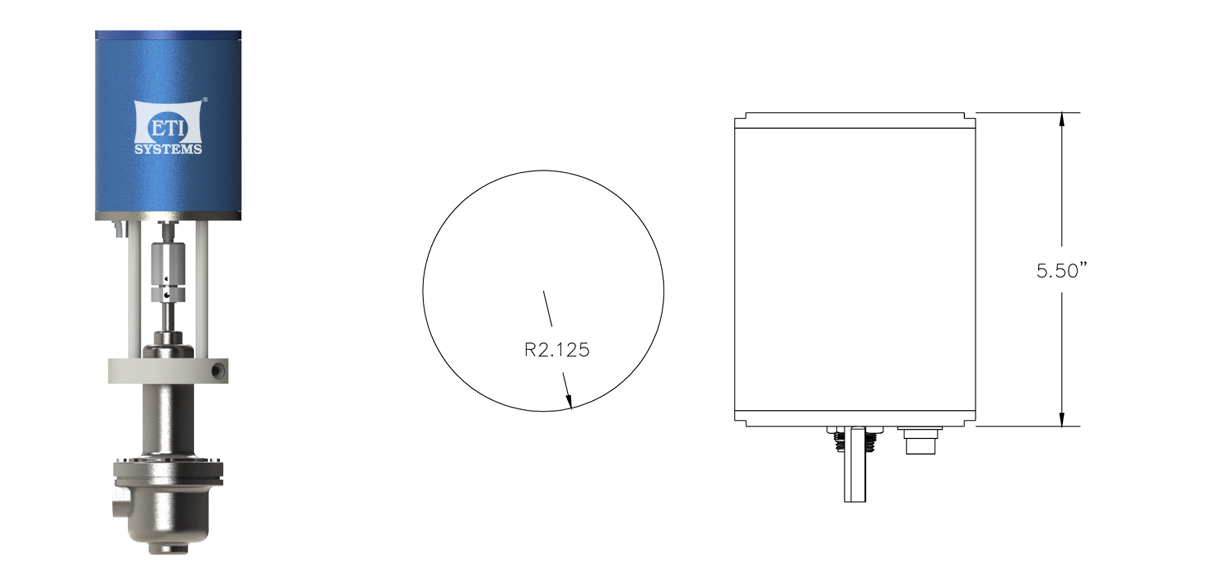Potentiometers: The Versatile Control Solution for Various Applications
Are you tired of searching for the perfect control solution that can adapt to different applications? Look no further! Potentiometers are here to revolutionize the way you regulate and adjust in a multitude of scenarios. From audio equipment to industrial machinery, these versatile devices offer unparalleled flexibility and precision. Join us on this journey as we explore the endless possibilities and uncover why potentiometers have become the go-to choice for professionals across industries. Get ready to unleash your potential with potentiometers!
Introduction to Potentiometers
A potentiometer, or pot, is a three-terminal resistor with a sliding or rotating contact that forms an adjustable voltage divider. If only two terminals are used, one end and the wiper, it acts as a rheostat. Potentiometers are used to control electrical devices such as volume controls on audio equipment.
Potentiometers are constructed with a resistive element and a wiper that slides along the element to create resistance (and thus voltage) between the element’s ends. The wiper can be moved by a knob or other mechanical device, or it can be made to move automatically by an external voltage or current. The position of the wiper determines the output voltage of the potentiometer; when the wiper is at one end of the element, the output voltage is at its maximum; when it is at the other end, it is at its minimum.
Potentiometers are available in many different shapes and sizes, and with various types of elements (including carbon, conductive plastic, wire-wound, and ceramic). They can also be linear (sliding) or rotary (rotating). Potentiometers are used in a wide variety of applications, including volume controls on audio equipment, light dimmers, angle sensors, and fuel level gauges.
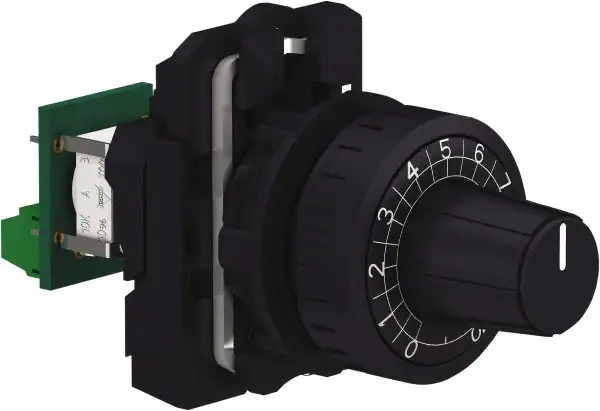
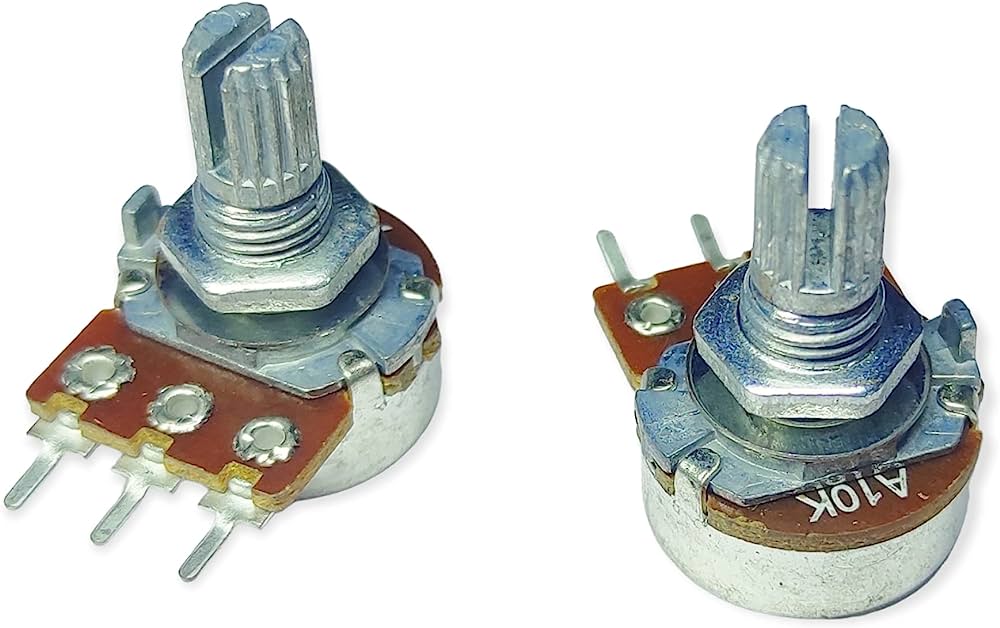
Types of Potentiometers
There are many types of potentiometers available on the market today, each offering its own set of advantages and disadvantages for various applications. The most common types of potentiometers are linear taper, audio taper, and logarithmic taper.
Linear taper potentiometers are the most basic type of potentiometer, and as such, they offer the simplest and most straightforward control over voltage or current in a circuit. Linear tapers are ideal for applications where precise control is not required, such as in volume controls for audio equipment
Audio taper potentiometers are designed specifically for use in audio applications, such as equalizers and mixers. They offer a more natural response to changes in input than linear tapers, making them well-suited for adjusting sound levels.
Logarithmic taper potentiometers are used when an exponential change is desired in voltage or current output. This type of taper is often used in lighting dimmer controls, where a small change at the beginning of the Potentiometer’s rotation results in a large change in light intensity.
Applications of Potentiometers
Potentiometers can be used in a wide variety of applications, from simple volume control to more complex electronic systems. In general, potentiometers are used to control the flow of electric current. By varying the resistance of the potentiometer, the amount of current flowing through the circuit can be controlled. This makes potentiometers an essential component in many electronic devices.
Some common applications for potentiometers include:
Volume control: Potentiometers are commonly used to control the volume of audio equipment such as stereos and amplifiers. By turning the knob on the potentiometer, the user can increase or decrease the volume of the audio output.
Light dimmer: Potentiometers are also used in light dimmer switches. By reducing the resistance of the potentiometer, more current can flow through the circuit and produce brighter light. Conversely, increasing the resistance will result in less current flowing through the circuit and produce dimmer light.
Motor speed control: Many electric motors use potentiometers to control their speed. By changing the resistance of the potentiometer, different amounts of current can flow through the motor windings which will cause the motor to rotate at different speeds.
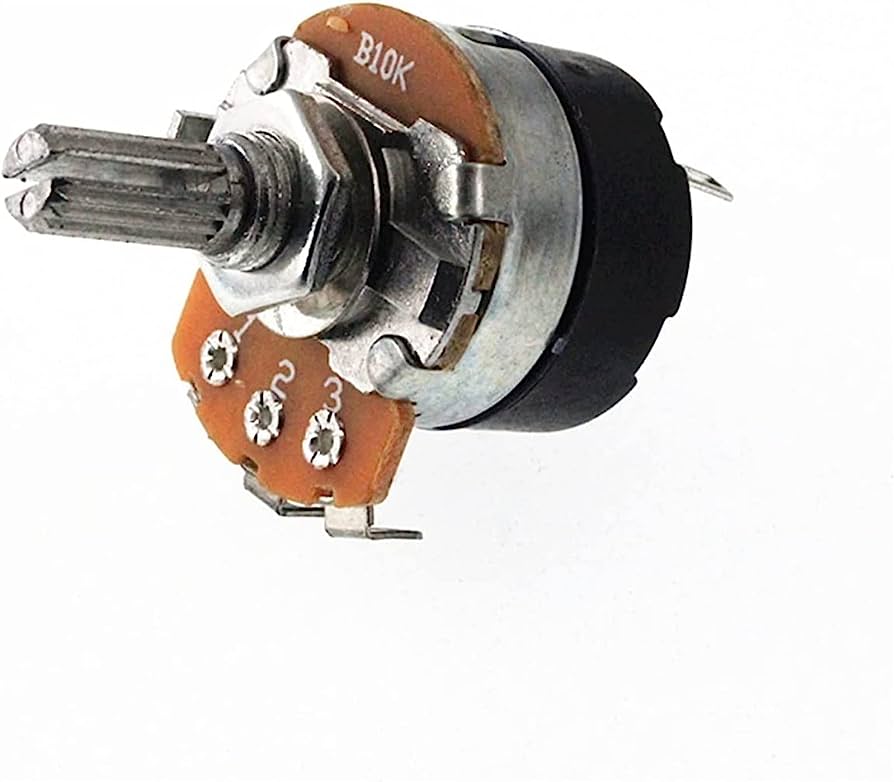

Advantages and Disadvantages of Potentiometers
Potentiometers are one of the most versatile control solutions available, allowing for precise control over a wide range of applications. However, they also have some disadvantages that should be considered before using them in a particular application.
Advantages:
- Potentiometers offer very precise control over a wide range of applications.
- They are relatively simple to use and require little maintenance.
- Potentiometers are widely available and come in a variety of shapes and sizes to suit different applications.
Disadvantages:
- Potentiometers can be affected by temperature changes, which can cause them to drift out of calibration.
- They are also susceptible to electrical noise, which can cause readings to be inaccurate.
Linear Motion Potentiometers
Linear potentiometers are sensors that measure the position of a movable object along a linear path. They are often used in applications where precise measurements are required, such as in medical devices and control systems.
Linear potentiometers typically consist of a resistive element, such as a resistor or conductive film, and a sliding contact, known as a wiper. As the wiper moves along the resistive element, the resistance between the two terminals changes. This change in resistance can be used to determine the position of the wiper along the length of the resistive element.
linear motion potentiometers have many advantages over other types of position sensors. They are relatively simple and inexpensive to manufacture, and they can be used over a wide range of temperatures and environments. In addition, linear potentiometers are extremely accurate and durable, making them ideal for use in critical applications.
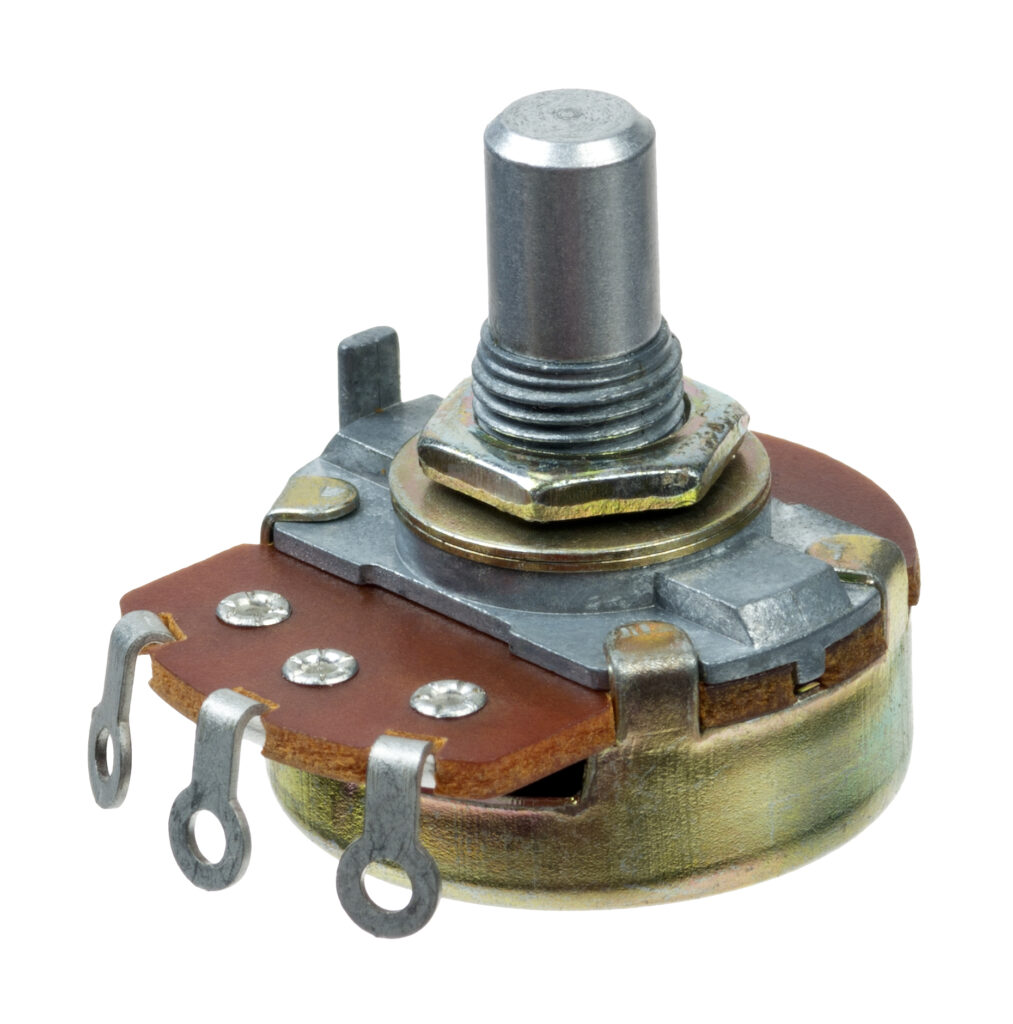

How to Select the Right Type of Potentiometer
There are many different types of potentiometers available on the market, each with its own unique set of features and capabilities. When selecting the right potentiometer for your application, it is important to consider the following factors:
-The required voltage and power rating
-The type of load (resistive, inductive, or capacitive)
-The required resistance value
-The desired tolerance level
-The operating temperature range
– The maximum rotational speed
Once you have considered all of these factors, you can narrow down your options and select the potentiometer that best meets your needs.
Conclusion
Potentiometers are one of the most versatile control solutions available, providing a wide variety of applications for various industries. They are reliable and cost-effective components which can be used in both analog and digital circuits. With their easy installation process and precise adjustments, potentiometers offer an ideal solution for many industrial needs. With so many advantages over other control options, it is no wonder that they remain such a popular choice among professionals in various fields.
Our Products
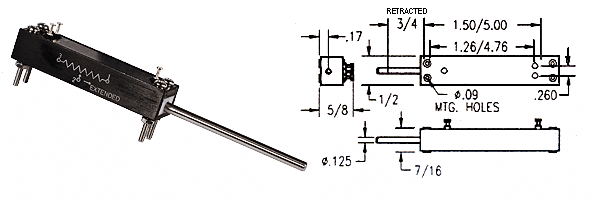
Conductive Plastic Element Black Anodized Aluminum Body, Stainless Steel Shaft, Gold Plated Terminals Recommended for Test and Lab Equipment, Industrial Applications, Medical Equipment (non-life support) Life Expectancy: 20 million strokes Resistance Tolerance: 20% standard (10% Available) Linearity Tolerance: .5% to 1.5% standard (0.3% to 1.0% Available) Power Rating: 0.2 to 1.2 Watt Electrical Stroke: 1″ […]

Conductive Plastic Element. Gold Plated Terminals. High Temp. Thermoplastic Housing. Stainless Steel Shaft. Recommended for Medical Equipment (non-life support), Robotics, Industrial, Test and Lab Equipment. Life Expectancy: 10 million turns Resistance Tolerance: ± 10% standard ( ± 10% available) Linearity Tolerance: ± 1.0% standard ( ± 0.5% available) Electrical Angle: 320º ± 5º Mechanical Angle: […]
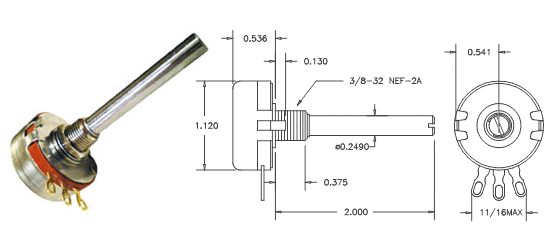
Hot molded carbon element Gold-plated terminals Stainless-steel shaft and housing Quality meeting or exceeding MIL-R-94 – QPL listed Rotational Life: 25,000 Resistance Tolerance: ± 10% or ± 20% Operating Temperature Range: -65°C to +125°C Power rating: 2 watts Insulation Resistance – dry: 10K Meg; wet: 100K Meg Dielectric Strength: 900 VRMS Starting Torque: 1 oz/in […]
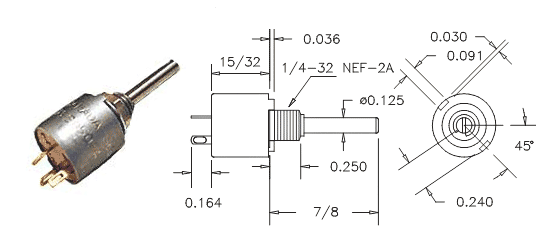
Hot molded carbon element One piece housing and bushing Stainless-steel shaft Quality meeting or exceeding MIL-R-94 – QPL listed Rotational Life: 25,000 Resistance Tolerance: ± 10% or ± 20% Operating Temperature Range: -65°C to +125°C Power rating: 0.5 watts Insulation Resistance – dry: 10K Meg; wet: 100K Meg Dielectric Strength: 750 VRMS Operating Torque: 0.5 […]

MG22 Concentric Turns Counting Dial Counts up to 20 turns. One Piece Mounting. Aluminum Housing. Black Nylon Knob. Numbers are White on Black Background. Over the Center Lock Available. Diameter – 7/8″; Extension from Panel – 1.0″ Maximum Panel Thickness – 1/4″ Weight: .2 oz

Electrical Specifications: 10K ohm precision potentiometer Single axis joystick Cylindrical knob Linearity (independent): ± 5.0% Lever Electrical Angle: 40° Max. Resolution: Essentially Infinite Mechanical Specifications: ± 20° from center deflection angle Life expectancy: 5 million operations Spring return to center Housing material: High temp. thermoplastic IP65 Rating
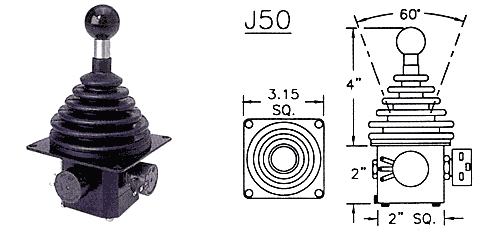
Two axis joystick 4″ handle height 60° deflection angle ( ± 30°) Ball knob Spring return to center Circular deflection pattern 10K ohm precision potentiometer Protective rubber boot (IP54 rating above panel) IP65 option available upon special request Panel mounting bracket
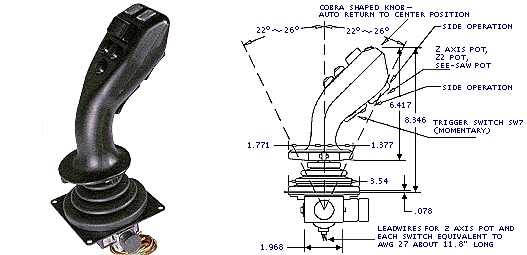
Multi-axis joystick 8.34″ handle height 45° deflection angle ( ± 22.5°) Spring return to center Cobra Head handle Circular deflection pattern 10K ohm precision potentiometers – all axis Three momentary switches (two illuminated, one trigger) Panel mounting bracket Protective rubber boot (IP65 rating above panel)
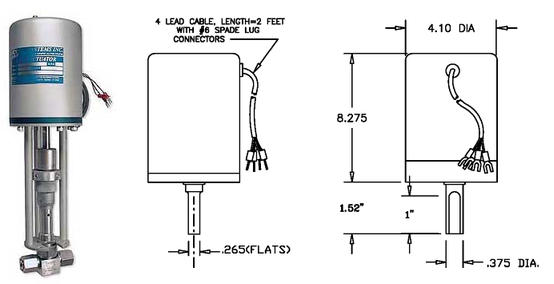
Input: 4 to 20 mA (200 ohms) or 0 to 10VDC (18KΩ) Rotation Speed : 1.5, 3, 5, 10, 20 or 40 RPM Power : 24 VDC (50 Watts min.) Dynamic Braking : Installed Limit Switches : Installed Torque Limiter : Set for Valve requirements. Wt : Approx. 21 in/lbs. max. Seating Limiter : Set […]
